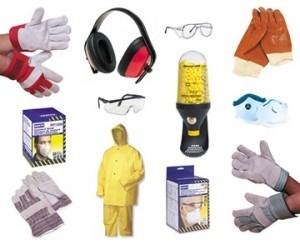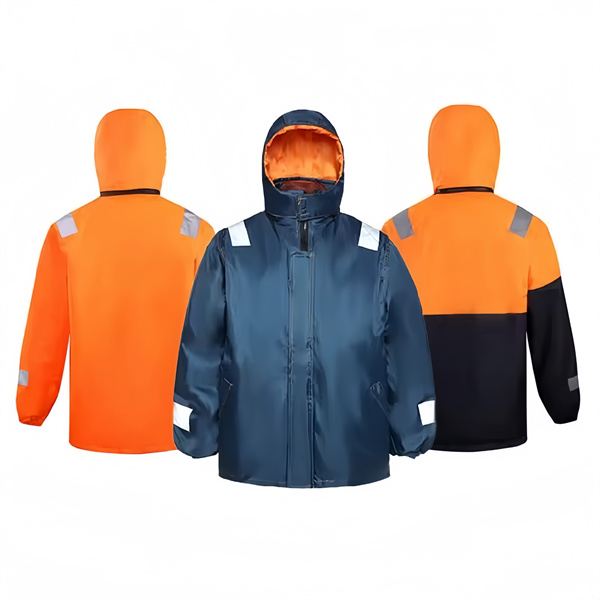What are the Uses of Marine PPE Equipment
Table of Contents
Marine environments are among the most demanding workplaces, where safety is a constant concern. From harsh weather to the dangers of heavy equipment and chemical exposure, marine workers face a variety of hazards. Proper use of marine personal protective equipment (PPE) is vital to ensuring safety and reducing the risk of injuries. This article explores the types, importance, advancements and effective using in marine PPE equipment.

The Role of Marine PPE
Designed to protect against physical injuries, chemical exposures, environmental extremes and life-threatening accidents, marine PPE ensures the safety and well-being of workers.
- Protect Against Environmental Hazards: Harsh weather, saltwater exposure, and slippery surfaces are common threats.
- Minimize Physical Injuries: Heavy machinery, sharp tools, and moving parts can cause serious harm.
- Ensure Survival in Emergencies: Life-saving equipment like life jackets and immersion suits can prevent fatalities during accidents or evacuations.

Common Types of Marine PPE Equipment
This comprehensive chart organizes marine PPE by category, purpose, applications, and key features to illustrate the range of protective equipment essential for marine environments.
| Category | Type | Purpose | Example Applications | Key Features |
| Head Protection | Hard Hats | Protects head from impacts and falling objects | Deck work, cargo handling | Shock-resistant, adjustable fit |
| Eye & Face Protection | Safety Goggles | Shields eyes from debris, spray, and chemicals | Welding, chemical handling | Anti-fog lenses, UV protection |
| Face Shields | Protects face during high-risk tasks | Grinding, hazardous material handling | Wide coverage, impact resistance | |
| Hearing Protection | Ear Muffs / Plugs | Reduces exposure to high noise levels | Engine rooms, ship maintenance | Noise-canceling, ergonomic design |
| Respiratory Protection | Dust Masks | Protects against airborne particles | Painting, sanding | Lightweight, disposable |
| Respirators | Protects against toxic fumes and gases | Confined space entry, fuel transfer | Replaceable filters, secure fit | |
| Hand Protection | Durable Work Gloves | Prevents cuts, abrasions, and mechanical injuries | Mooring, rope handling | Reinforced grip, abrasion-resistant |
| Chemical-Resistant Gloves | Shields hands from corrosive or harmful substances | Cleaning, chemical spills | Long cuffs, acid-proof material | |
| Foot Protection | Non-Slip Boots | Prevents slips and falls | Deck work, fishing | Oil- and water-resistant soles |
| Steel-Toe Boots | Protects feet from heavy impacts | Loading operations, engine room work | Reinforced toes, anti-slip soles | |
| Body Protection | High-Visibility Vests | Enhances worker visibility in low-light environments | Night shifts, foggy conditions | Reflective strips, bright colors |
| Thermal Life jackets | Provides insulation in cold conditions | Arctic expeditions, winter sea voyages | Heat-retaining, moisture-wicking fabric | |
| Chemical-Resistant Suits | Protects body from hazardous spills | Fuel handling, chemical storage | Seam-sealed, impermeable material | |
| Life-Saving Equipment | Life Jackets | Ensures flotation during water emergencies | Overboard incidents, rescue operations | Automatic inflation, whistle, and light attachments |
| Immersion Suits | Prevents hypothermia in cold water | Survival at sea, emergency evacuations | Thermal insulation, watertight seals | |
| Fall Protection | Safety Harnesses & Lanyards | Secures workers performing tasks at heights | Mast climbing, equipment repairs | Adjustable straps, shock absorbers |
| Specialized Protection | Flame-Resistant Clothing | Protects against heat and fire hazards | Welding, fire response | Flame-retardant fabric, lightweight design |
| Buoyant Thermal Protective Aids | Provides flotation and insulation | Lifeboats, extreme cold environments | Combined thermal and buoyancy properties |

Technological Innovations in Marine PPE
Advancements in technology have redefined the design and functionality of marine PPE equipment, enhancing safety, comfort, and efficiency in hazardous maritime environments.
1. Smart Wearables for Real-Time Monitoring
The integration of smart technology has transformed PPE from passive protective gear into active safety systems:
- Health Monitoring Sensors: Modern PPE includes sensors embedded in helmets, life jackets, and clothing to monitor heart rate, temperature, and fatigue levels. Alerts are sent to supervisors when abnormal readings are detected, enabling timely intervention.
- Environmental Detection: Helmets or respirators equipped with gas detectors and oxygen sensors provide real-time updates on air quality, alerting workers to toxic gases or low oxygen conditions.
2. Lightweight and High-Performance Materials
Advances in material science have led to PPE that combines durability with comfort:
- Nanomaterials: Incorporation of lightweight, corrosion-resistant materials that endure harsh marine conditions without compromising user comfort.
- Phase-Change Materials (PCMs): Used in thermal clothing to regulate body temperature by absorbing, storing, and releasing heat, ensuring comfort in extreme temperatures.
3. Advanced Buoyancy Devices
Life-saving PPE has benefited from technology aimed at increasing survival rates:
- Automatic Inflation Systems: Modern life jackets feature auto-inflation triggered by water immersion, ensuring immediate buoyancy.
- Integrated Beacons: Many life jackets now come with built-in GPS and distress signal systems, making it easier to locate individuals during emergencies.
- Thermal Insulation Features: Immersion suits are equipped with advanced insulation layers to protect against hypothermia in freezing waters.
4. Enhanced Visibility Solutions
Improved visibility is critical for safety during low-light or adverse weather conditions:
- High-Reflectivity Materials: Reflective fabrics now use advanced coatings that maintain visibility even in wet or dirty conditions.
- LED-Embedded Gear: Helmets and vests integrated with rechargeable LEDs offer better visibility for nighttime or foggy operations.
5. Ergonomic Designs for Comfort and Functionality
PPE manufacturers are focusing on designs that improve mobility and reduce strain:
- Exoskeleton-Assisted Suits: Wearable exoskeletons help workers lift heavy objects, reducing physical strain and the risk of injuries.
- Streamlined Fit: Ergonomic designs ensure PPE is snug without restricting movement, enhancing both safety and productivity.
6. Augmented Reality (AR) Integration
AR technology is being incorporated into marine helmets and goggles to improve situational awareness:
- Data Displays: AR-enabled helmets can project critical data, such as navigation maps or safety instructions, directly onto the visor.
- Remote Guidance: Workers can communicate with experts onshore who can see live video feeds and offer guidance during complex tasks.
7. Innovative Fall Protection Systems
Height-related tasks in marine environments demand advanced fall protection:
- Self-Retracting Lifelines (SRLs): Automatically adjust the tether length to minimize slack, reducing the risk of trips and falls.
- Impact Sensors: Harnesses now include impact sensors that record fall events, helping to assess the severity and need for replacement equipment.

Best Practices for Using Marine PPE
This chart outlines best practices for effectively using marine PPE, ensuring maximum safety and compliance in maritime operations.
| Practice | Description | Benefits |
| Conduct Regular Training | Train personnel on proper usage, maintenance, and limitations of PPE. | Ensures correct usage and maximizes effectiveness. |
| Perform Pre-Use Inspections | Check PPE for damage, wear, or defects before each use. | Prevents equipment failure and enhances safety. |
| Choose the Right Equipment | Select marine PPE equipment suited to the specific hazards and environmental conditions of the task. | Provides optimal protection against identified risks. |
| Ensure Proper Fit | Verify that PPE fits comfortably and securely for each individual. | Reduces discomfort and ensures consistent protection. |
| Maintain Cleanliness | Regularly clean and disinfect PPE to prevent contamination or degradation. | Prolongs equipment lifespan and maintains hygiene. |
| Store Properly | Keep PPE in a clean, dry, and designated storage area away from harmful substances or damage. | Preserves quality and readiness for use. |
| Replace When Necessary | Replace PPE that shows signs of wear, damage, or after reaching its recommended lifespan. | Ensures continued effectiveness and compliance with safety standards. |
| Use as Directed | Follow manufacturer instructions and workplace safety protocols when using PPE. | Avoids misuse and ensures full protective capabilities. |
| Encourage Reporting of Issues | Promote open communication about PPE concerns, such as discomfort or malfunction. | Identifies and resolves problems promptly, improving safety practices. |
| Monitor Environmental Conditions | Adapt PPE usage based on weather, visibility, or other changing marine conditions. | Maintains adequate protection in dynamic maritime environments. |

In summary, Through choosing the right marine PPE, adhering to safety regulations, and leveraging technological advancements, marine operators can create a safer working environment. Proper training in the use and maintenance of PPE equipment further ensures that workers remain protected and prepared for the challenges of marine work.


